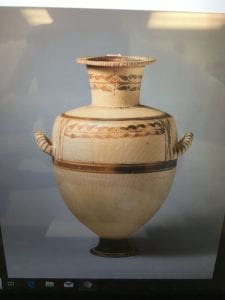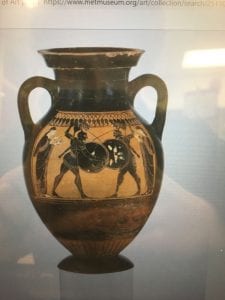There were a series of methods and processes that I am using to create the vessel form. The first step was to make a circular base. This was done by cutting out a circular base from a slab roll. From there, I made a series of coils and connected them to form the vase (Picture 1). Making the coils required me to stand up and roll the coils out. By making the coils this way, the slabs were better structured and they did not roll out like pizza dough. When making the slabs, I had to make certain changes to make sure that the object was not deviating from the template that I made from cardboard (Picture 2). Cutting out the template required me to draw out the outline and make it fit the template. The process of making this object resulted in me having to strengthen the methods used in creating artwork. Forming the coils took practice and many of the coils were being flattened out. After practicing several times, I was able to make coils that were appropriate for the object. To refine the project, I may use a paddle to make the form concur with the template. I will also use the serrated edge scrapper and the rubber rib to smooth out all cracks. The scrapers were also used to stick the coils to the edges of the project (Picture 3).

Picture 1 exemplifies the way I made the coils. I had to scrape the coils and the lips to form a good connection. Once I finished this, I had to continue to smooth the vase.

Picture 2 shows the cardboard template I made from the sketches. In order to make the coils form the structure I wanted it to form, I had to make sure that the coils were aligned with the template.

Picture 3 shows the tools that were involved in making the vase. The rubber rim and the serrated scraper were key tools in making the coils and including them on the vase. The paddle was used to form the shape of the vase.


